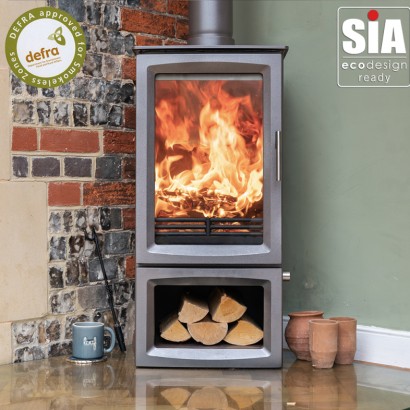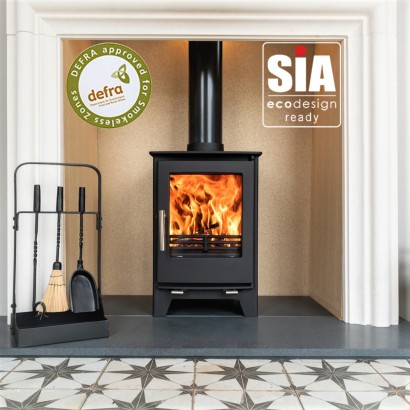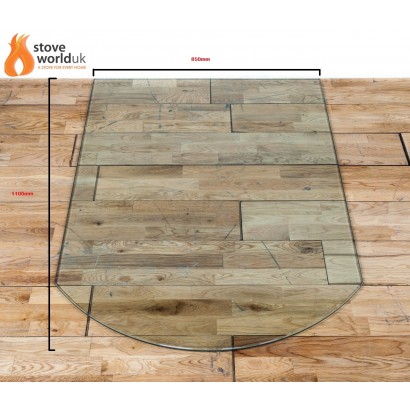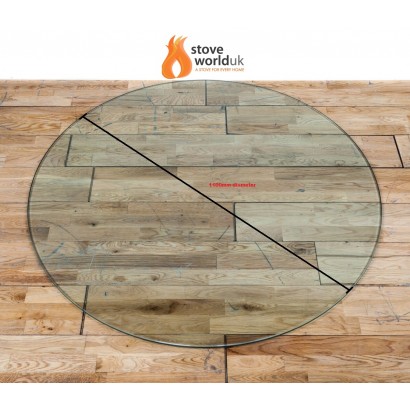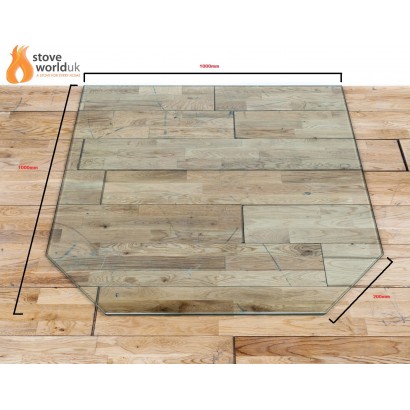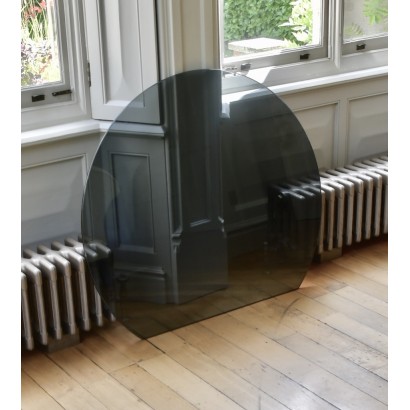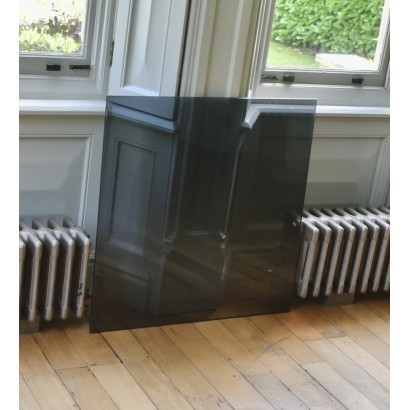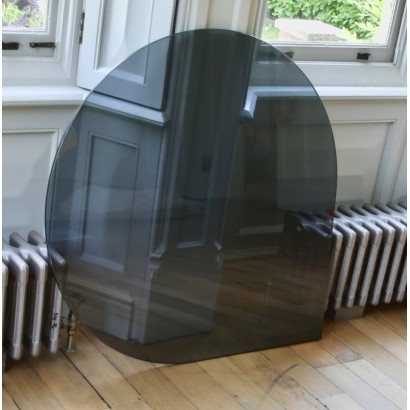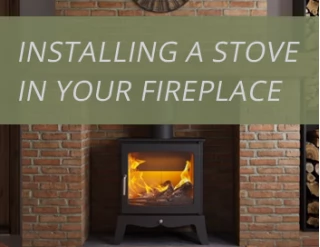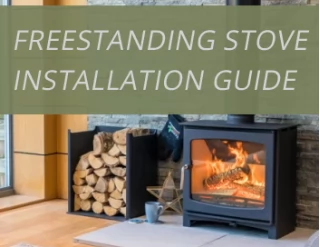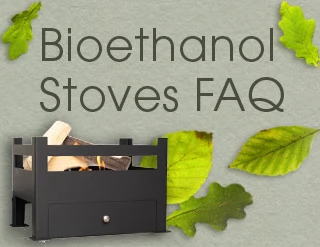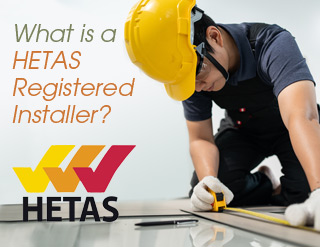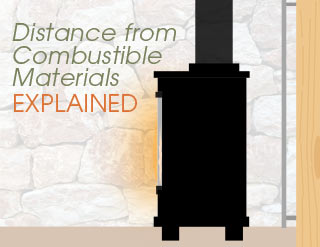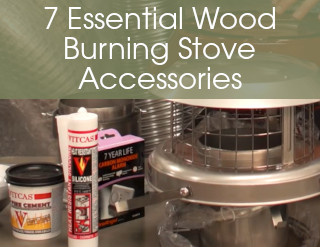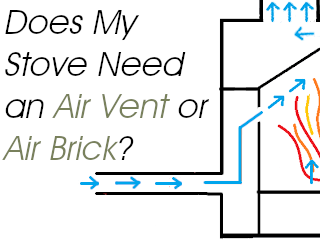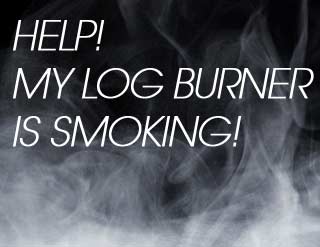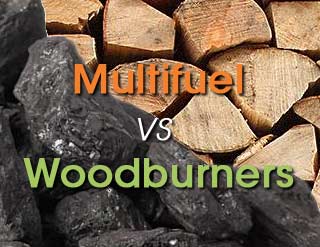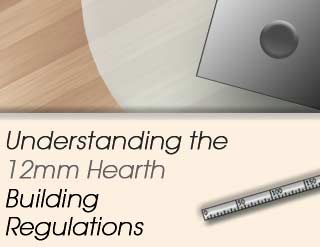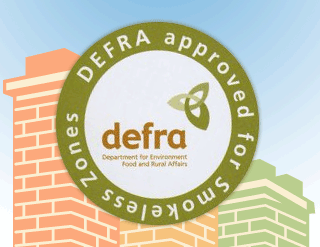Helping You Choose A Woodburning Stove - Free-Standing Installation
What is a Free-Standing Stove?
A stove is free-standing if it is not installed in a fireplace; for example, against a wall or in the corner of a room. A free-standing wood burning stove is a great way to heat a room without a fireplace. And with a twin walled chimney system you will have much more choice about where your stove can be fitted. If you'd like to install a stove in an existing fireplace, see our dedicated guide here.
Twin walled flues are stainless steel pipes which have insulation running between them. This allows them to pass up through ceilings and out through walls. Standard single skin flue pipes will get far too hot and create a fire risk.
This guide will give you a run-down of five very important basics you need to know when you’re considering a free-standing stove installation.
Distances to Combustibles and a Guide to Heat Shields
(See video: 0:17)
The first consideration when installing a free-standing stove is the distances to combustibles. If you've got a brick wall, then it's not particularly a problem; however, if you have a plasterboard wall or any other combustible (i.e. flammable) material, there is a set distance the stove has to be away from the wall. Each stove model will have different requirements of how far it must be from combustible materials, due to kilowatt output and the stove’s construction. Most stove manufacturers will provide the distance to combustibles so you can check whether it’s suitable for your install.
Many freestanding stoves will have heat shield options, or be built in ways that reduce the distance it can be from the wall. For example, The Hampton Vista 500 as standard would have to be fitted 375mm away from a combustible wall at the rear, but with a heat shield fitted, it can be as close as 100mm. You can also get units which have side heat shields, which help to reduce the distances to combustibles at the side, often for a corner installation.
Corner installations will generally need to be very close to the wall so they don’t take up too much space, so this may be something to keep in mind when searching for your ideal stove. It is worth checking if the stove you’d like has a heat shield option before writing it off for having too far a distance to combustibles for the install you want. For more detailed information on understanding the ‘distance to combustibles’ regulations, please see our dedicated guide here.
Quick facts:
- “Combustibles” means any flammable material, including walls, beams and furniture.
- Different stoves a different minimum distance from combustibles for safety.
- Some stoves have optional heat shields to reduce the distance safely.
- Check for heat shield options before dismissing a stove for distance limitations.
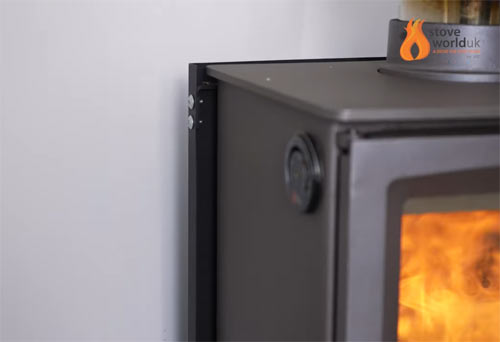
Heat shield fitted on the rear of the stove to reduce distance from combustibles
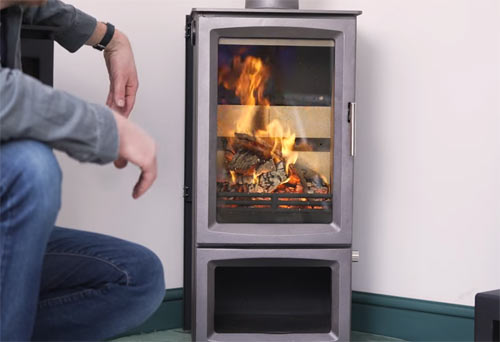
Hearths
(See video: 1:55)
As well as distances to combustibles, you need to consider a hearth for your stove. For safety, a stove has to sit on a hearth or other non-combustible flooring. This is important not only for preventing fires, but to protect your floor.
If you have a brick or non-combustible tile floor, you will still need a hearth. How this is defined is up for debate and depends on how you interpret the regulations. In most cases, people opt for a glass hearth. Not only does a hearth protect your floors, it also protects you from getting too close to the hot stove, or accidentally placing combustible objects or furniture too close.
As stoves can reach very high temperatures, you should check your stove is suitable to sit on a 12mm hearth. A majority of stoves, especially those designed with a freestanding setup in mind, will be approved for a 12mm hearth, but some stoves may get hotter at the bottom and will need a thicker hearth.
A hearth must be at least 12mm thick and protrude at least 225mm from the opening of the stove, or 300mm for a fire-burning appliance without a door. But that doesn't mean a hearth can’t be stylish and match your stove and room decor! Safe hearths come in a range of styles and materials, such a stone, granite, glass, and steel. We are particularly partial to glass stove stands, which give a unique modern look to a freestanding install, and come in a wide variety of shapes to suit your ideal install.
Quick facts:
- All stoves must be on a non-combustible surface.
- Hearths must be at least 12mm thick, but some require more.
- Stone, granite, glass, and steel hearths are all permitted.
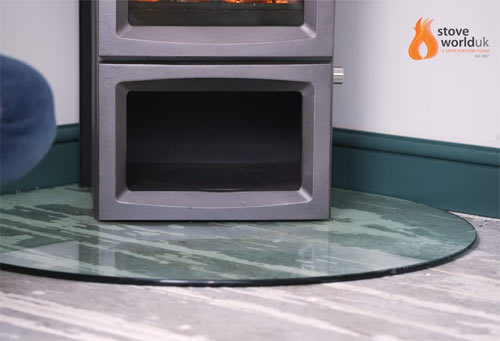
Woodburner on a 12mm glass hearth
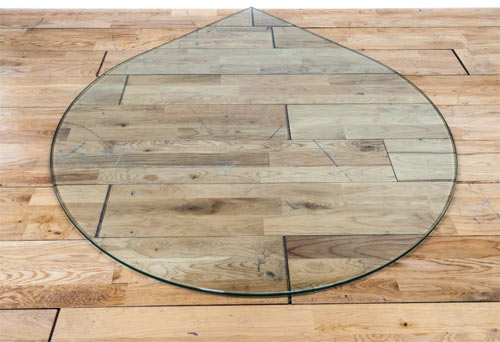
Hearths come in a wide range of shapes and sizes - like this teardrop shape for corner installs
Kilowatt output
(See video: 2:23)
Another consideration is the kilowatt output of your stove. Any stove that has a nominal output over 5kw will require an air brick in the room, and if the property is a new build, it will require a direct air feed as well. 5kw stoves come in a huge variety of shapes and sizes. If you are considering a stove with a high kilowatt output because you need a large stove to fill the space, you may actually be able to find a 5kw stove of the same size.
Stoves with a nominal output of 5kw and under won’t require any additional ventilation, so you don’t have to worry about knocking a hole in the wall to meet regulations (although some exceptions may apply). If you know you need a higher kilowatt output to heat your space, then it’s important to be aware of the ventilation requirements so you can keep yourself and your home safe and compliant. For a comprehensive guide to air bricks and direct air feed requirements, please see our guide.
Quick tips:
- Stoves with a nominal output of over 5kw need additional ventilation like an air brick or direct air feed.
- Stoves with 5kw nominal output or under don't need extra ventilation.
- Refer to our comprehensive guide for detailed information on air bricks and direct air feed requirements. Regulations are different if you are in a new build (ie. a house built after 2008), so it is worth a read.
Fuel
(See video: 4:07)
When considering a stove, it's important to understand its optimal fuel requirements.
Wood-burning only stoves are designed to burn wood on the base, typically forming a bed of ash with air flowing over the top. While the option of burning smokeless coal as well as wood might seem appealing, it may not end up aligning with your actual usage in the long run. In reality, many people find themselves primarily burning wood.
Wood and smokeless coal have distinct combustion requirements, with smokeless coal necessitating ample airflow from underneath to ignite, whereas wood stoves rely on secondary and tertiary air systems.
Opting for a multi-fuel stove offers flexibility, but may require a compromise in performance. If you see yourself primarily burning wood, a wood-only stove is often the optimal choice for efficiency and ease of use. However, if you want the versatility of burning both fuels, multi-fuel stoves offer a suitable compromise. Some multi-fuel units have separate grates, allowing effective combustion of both wood and smokeless coal very well. Ultimately, choosing the right stove depends on your fuel preferences and usage habits.
For even more about deciding between wood and multi-fuel stoves, read our guide.
Quick tips:
- Knowing what fuel your stove needs is key for getting the most out of it.
- Wood-burning stoves are optimised for wood only, while multi-fuel stoves can handle both wood and smokeless coal.
- Multi-fuel stoves give you choice, but wood-only stoves can be simpler and more fuel-efficient.
- Pick the stove that suits your fuel preferences and habits best.
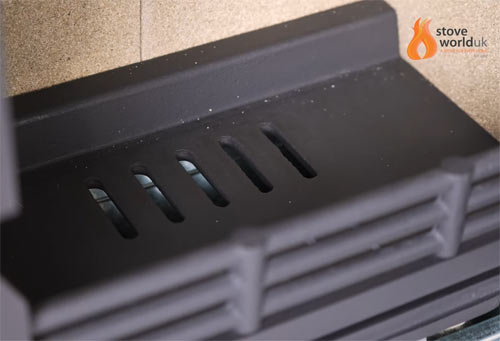
A multifuel grate with gaps allowing air flow under smokeless coal
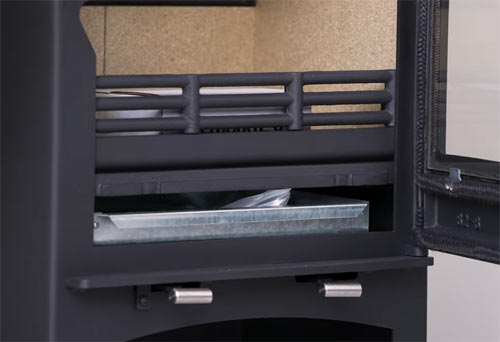
Multi-fuel grate from the front
Defra Approval
(See video: 6:01)
Last but not least is Defra approval. If you're in a smoke-free zone in a built-up residential area or if you're planning on installing the stove into a five-inch chimney system, then your stove will need to be Defra Approved. Defra approved stoves will not fully close off, so there will be a little bit of air flowing through the stove at all times. Most units these days are Defra approved, especially newer models, but it's worth keeping in mind as it won’t be legal to instal a non-Defra stove in a smoke-free zone.
For a low-carbon solution to home heating, consider a stove with clearSkies certification. clearSkies is an independent emissions and energy performance certification scheme. Read more about clearSkies here.
In addition, all stoves manufactured since 2022 are required to be EcoDesign compliant. Long before that, Stove World UK was amongst the first companies to begin designing and selling EcoDesign stoves. You can read more about EcoDesign here.
Quick tips:
- Defra approval is legally required for stoves in smoke-free zones or setups with a 5-inch chimney system.
- Approved stoves maintain airflow, ensuring compliance with regulations.
If you need further help or have any questions about a free-standing stove installation, you can call us on 01256 889 397 or email [email protected], and our friendly team will be happy to help.
Bestsellers
BURNT GREY - Ecosy+ 5kw Hampton Vista 500 - Defra Approved - 5kw - Eco Design Ready - Woodburning Stove
£859.00 Ex Tax: £715.83
Ecosy+ Snug 5kw Multi-Fuel, Eco Design Approved , Defra Approved Stove
£549.00 £565.00 Ex Tax: £457.50
12mm "D" shape Glass Hearth / Plinth Floor Plate 850mmx1100mm
£149.00 Ex Tax: £124.17
12mm Circle / Circular Glass Hearth/Plinth Floor Plate 1100mm
£198.00 Ex Tax: £165.00
12mm Hexagon / Cut Corner Glass Hearth/Plinth Floor Plate 1000mm x 1000mm
£149.00 Ex Tax: £124.17
Smoked 12mm Glass Hearth - Circle With Slice - 950mm x 1100mm
£156.00 Ex Tax: £130.00
Smoked 12mm Glass Hearth - Square - 840mm x 840mm
£149.00 Ex Tax: £124.17
Smoked 12mm Glass Hearth - Tear Drop - 900mm x 900mm
£165.00 Ex Tax: £137.50

 0 item(s) - £0.00
0 item(s) - £0.00 